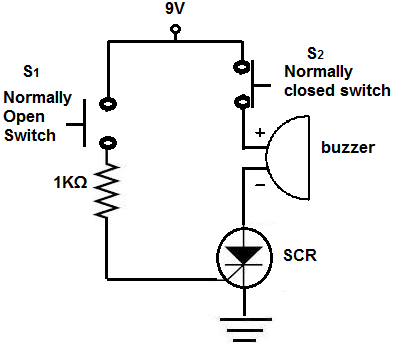What is a Latching Switch?

A Latching Switch is a switch that once triggered on stays on until the power that goes into is removed or disabled.
Unlike other switches, which operate only when pressed, latches remain on even after the button which triggers it is turned on. A latch, essentially, "latches on" and does not turn off until the power is completely removed from it. Pressing the button which triggers a latch has no effect to turn it off.
Many devices operate with latches, so they have widespread application within circuits. Think of the major applications of alarms, which function with latches. Once alarms are triggered, they remain on indefinitely, until the whole system is disabled. This is the case for most alarms, including burglar alarms and fire alarms.
The most common used latching device in circuits are
silicon-controlled
rectifiers (SCRs). SCRs are
are three-terminal devices which function as electrically controlled switches. They are composed of a gate,
an anode, and a cathode. Once the the SCR is connected in a closed
circuit and the voltage to the gate is sufficient, it triggers on and current then flows from the cathode to the anode.
Turning off or otherwise changing the voltage to the SCR's gate no longer has any effect. The SCR remains on.
Check out the below circuit to see an example of a latching circuit.
Latching Switch Circuit

The above latching switch uses an SCR as the latch. The switch, S1, triggers the SCR latch, so that current flows from the anode to cathode, turning on the buzzer. Once this switch is pressed down, the buzzer turns on. Releasing the switch, S1, has no effect on turning off the buzzer. Only when switch, S2 is pressed, disconnected the 9-volt battery, does the buzzer turn on.
This is how latching switch circuits operate.
